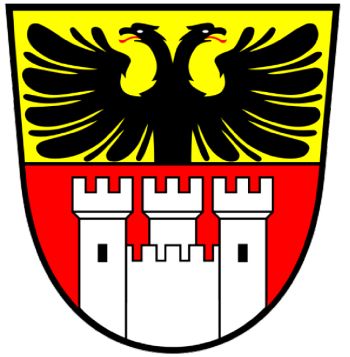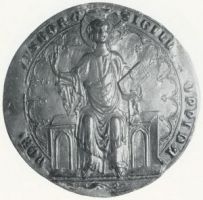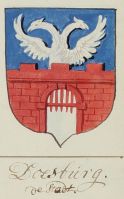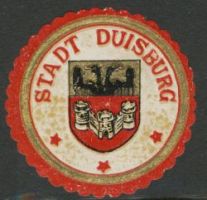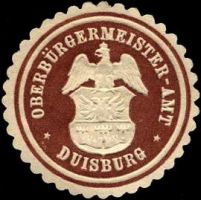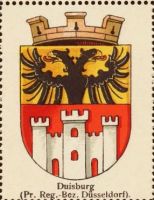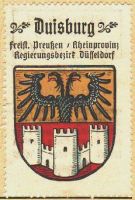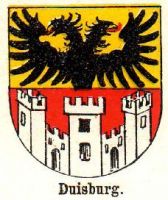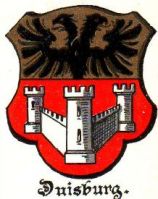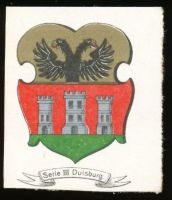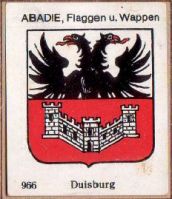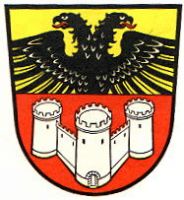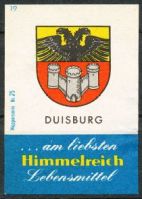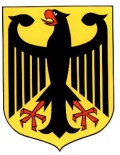Duisburg
|
(1929-1935 DUISBURG-HAMBORN) State : Nordrhein-Westfalen District (Kreis) : Duisburg Free urban district
|
| German | Auf quergeteiltem Schilde in der oberen Hälfte auf Goldgrund einen schwarzen Doppeladler, von der Brust ab aufwärts, mit roten Zungen, in der unteren Hälfte eine in Silber dargestellte dreitürmige Stadtmauer auf rotem Grund. |
| English | blazon wanted |
Origin/meaning
The arms were officially granted on January 31, 1977.
Duisburg became a city in the late 12th or early 13th century. The oldest known seal of the city dates from between 1209-1224 and showed Christ sitting on a throne. The three later great seals of the city, from the 13th and 14th century, all show the same basic composition. The seals were used until the 17th century.
In a contraseal from the 15th century the present arms appear for the first time. As proper arms they have been used since the middle of the 16th century. The upper part shows the imperial eagle, whereas the lower part may represent the city itself. The red and silver probably refer to the Hanseatic League, to which the city belonged.
The arms did not change after the merger in 1974, but the shape of the castle in the image used by the city is changed slightly.
Image gallery
The arms in a manuscript from 1750
The arms in the Wappen-Sammlung (+/- 1910)
The arms by Hupp in the Kaffee Hag albums +/- 1925
The arms in the Continentale Verlags-Anstalt album, +/- 1910
The arms in the Abadie albums, 1930s.
Literature: Stadler, 1964-1971, 8 volumes; Nagel, R.:Rheinisches Wappenbuch, Köln, 1986
This page is part of the German heraldry portal Deutsche Wappensammlung |
Heraldry of the World |
|
German heraldry:
|
Selected collector's items from Germany:
|
Contact and Support
Partners:
Your logo here ?
Contact us
© 1995-2025, Heraldry of the World, Ralf Hartemink 
Index of the site
